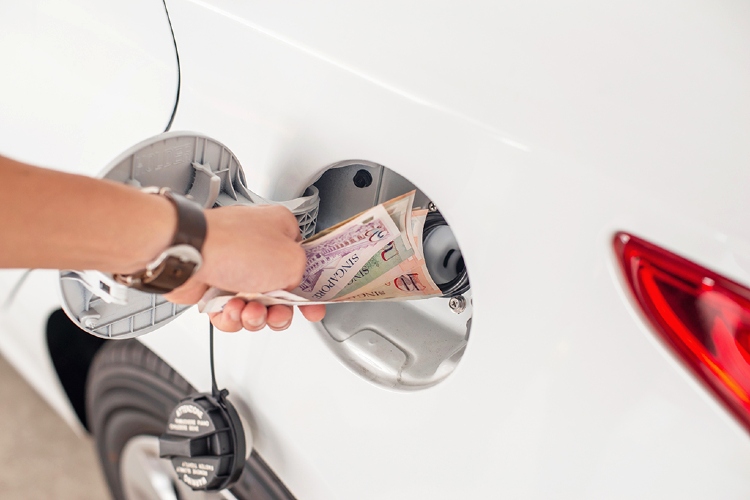
Cars left idle during the circuit-breaker may exhibit certain problems.
The circuit-breaker has ended and some of us have had to resume working from the office.
If you’ve done your best to maintain your vehicle during the circuit-breaker, it is probably running faultlessly now.
Nevertheless, leaving a car idle for long periods of time could still have affected its components. Perhaps your car just doesn’t “feel 100%”.
Here are five common issues that you can easily fix.

Photo: 123RF.com
1. STREAKY WIPER BLADES
It rained a couple of times last week and you might have noticed that your wiper blades now leave streaks on your windscreen.
But don’t just go and replace them without trying to remedy the problem first. Wash your windscreen and wiper blades with car shampoo the next time you wash your vehicle. You should consider claying your glass and polishing it to further remove any contaminants.
Following this, use a bit of rubbing alcohol to wipe down the blades. The streaky problem should be gone. If it persists, then it’s probably time to change your blades.
Wiper blades wear out very quickly in our weather, especially since they’re always resting on hot glass. If your carpark isn’t sheltered, expect your wipers to wear out even faster.

2. YOUR ENGINE FEELS SLUGGISH
There are a variety of reasons for this. A lack of use, which leads to a lack of lubrication, is one of the main factors.
Imagine not working out for a long time and then suddenly exercising for an hour. It doesn’t feel good, and it’ll take a while before you feel energised.

Redlining your engine will not cause it to blow up. (Photo: 123RF.com)
Apart from a lack of lubrication, the lethargy could also be down to gummed up fuel injectors. Gearboxes and differentials, which also go unused for long periods, can contribute to this as well.
So, for peppier performance, drive your car for longer distances more often. And as our resident engineer recommends, you should redline the engine (but never when the motor is cold) every so often, too.

Photo: 123RF.com
3. SLOW STARTS
If your battery was weakened during the circuit-breaker, your car will take longer to start and/or sound sluggish when it does.
Even when your vehicle is switched off, numerous systems from the in-car camera to the memory functions require power. If your battery is less than a year old, you can recharge it by driving non-stop for 30 to 40 minutes.
Driving your car in this manner twice or thrice a week should keep the battery in good condition. If this doesn’t work, then it might be time to get a new battery. Consult your mechanic if you’re unsure.

Check your tyres for flat spots if you experience any steering wheel vibrations.
UNUSUAL VIBES FROM THE STEERING WHEEL
If you’ve only driven once or twice a week during the circuit-breaker, then steering wheel vibrations are probably caused by flat spots on your tyres.
We say “probably” because flat spots usually take a long time – more than two months – to manifest.
Nevertheless, check for flat spots by starting your car and inching forward, before stopping and applying your parking brake. Look at the spots that the car was sitting on.
If there are flat spots, don’t panic. They will resolve themselves after you have driven around for a while. Before doing so, head to the nearest petrol kiosk and check your tyre pressures first.
If the spots don’t disappear, have the tyres checked by a qualified mechanic, who will be able to advise if they need to be replaced.

Pressing the “A/C” button turns the compressor on and off.
THE AIR-CON ISN’T COLD AND SMELLS FUNNY
The circuit-breaker didn’t just leave engines idle. It also left air-conditioning systems unused. Like an engine, your air-conditioning system must be operated regularly for it to function well.
If the air-con doesn’t get cold, check if you’ve accidentally pressed the “A/C” button, which turns the compressor on and off.
For foul odours, see if you’ve accidentally switched off the air-recirculation mode. You’ll know you have when nasty smells from outside suddenly permeate your cabin. Turn on the re-circulation mode to fix this.
If the air-con still smells bad, it’s time to have it serviced.

YOUR FUEL ECONOMY HAS WORSENED
During the circuit-breaker, your fuel economy was probably the best it’s ever been, especially if you mostly drove at night. There were few cars on the road and no stop-and-go traffic to speak of.
But with traffic building up again and possibly more errands to run, your consumption will naturally rise.
To improve your economy, adopt a gentler driving style, anticipate road and traffic conditions, and leave earlier so you don’t rush.
Remove unnecessary items from your vehicle and ensure your tyre pressures are correct while they are still cold. Be consistent with vehicle maintenance.
Remember, fuel economy is determined by so many factors that it’s really hard for the average motorist to achieve the manufacturer’s stated figures. That’s why we like to say, “your mileage will vary”.
End of circuit-breaker: 5 things drivers must watch out for
5 car maintenance tasks you can perform alone
What’s draining your car battery?
Top tips for better fuel economy
Here’s why you should not “top up your air-con gas”












